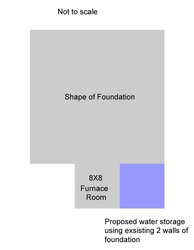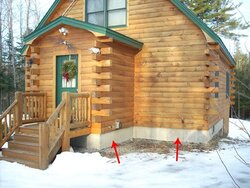This came up in another thread, but in case they don't see it, I was wondering if some of our engineering types would care to answer a question I have about creating a pressurized, underground storage tank.
Would it be possible to pressurize an underground storage tank, say a 2,000 gallon steel or fiberglass fuel tank? Would the support of the ground, in other words, allow you to pressurize such a tank to more than 30 psi?
I'm thinking that it would be pretty easy to dig a pit, line it with plastic or some other waterproof liner, place the tank in the pit, get it all plumbed up, and then spray a thick layer of foam around it. Could you engineer it so that the foam would provide sufficient support for the pressure? That sure would simplify things and allow you to get a large amount of pressurized, virtually invisible storage for pretty cheap.
Would it be possible to pressurize an underground storage tank, say a 2,000 gallon steel or fiberglass fuel tank? Would the support of the ground, in other words, allow you to pressurize such a tank to more than 30 psi?
I'm thinking that it would be pretty easy to dig a pit, line it with plastic or some other waterproof liner, place the tank in the pit, get it all plumbed up, and then spray a thick layer of foam around it. Could you engineer it so that the foam would provide sufficient support for the pressure? That sure would simplify things and allow you to get a large amount of pressurized, virtually invisible storage for pretty cheap.




